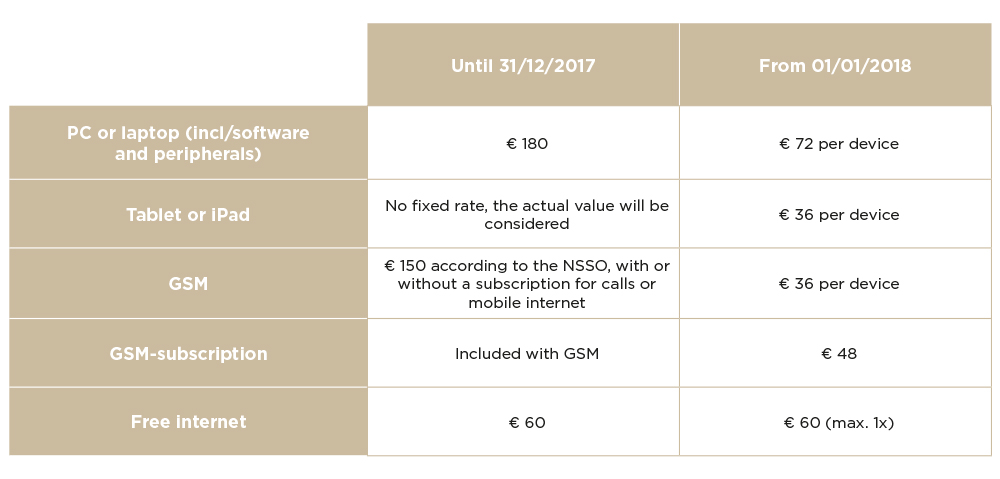EMPLOYMENT IN BELGIUM

1. Deadline for submitting various reports is approaching
Companies that employ more than 20 employees in Belgium are, in principle, obliged to draw up an employment plan annually. The employment plan contains measures to maintain or increase the employment of workers aged 45 and over.
An information and / or consultation procedure must be followed when drawing up the employment plan. For companies with a works council or a CPPW, the reports must, in principle, be provided and discussed within 3 months after the end of the financial year. If your company’s financial year coincides with a calendar year, you must thus comply with this obligation before 31 March. Other companies prefer to set a similar deadline because of the fact that the measures in the plan must be achieved by 2018.
In addition, the internal service for prevention and protection at work of each company is legally obliged to prepare an annual report with the activities of the past year. The report must be submitted to the inspection by 1 April at the latest.
The form to be completed for the annual report can be found on the website of the Federal Public Service:
http://www.werk.belgie.be/Jaarverslag_Interne_dienst_voor_preventie_en_bescherming_op_het_werk.aspx
Failure to prepare the aforementioned reports according to the legal procedure can lead to the imposition of criminal penalties. If you need help with drafting various reports, feel free to contact.
2. Belgian system of automatic wage indexation
The automatic wage indexation applies to the salaries of all government employees and of
all private sector employees covered by a joint committee.
Almost all employees are directly or by extension submitted to a joint committee and so the indexation applies to almost all employees in the private sector. The joint committees are
organized at sector or occupational level, in total there are about 170 joint committees and
subcommittees.
Although the increase in hourly labour costs is determined since 1996 (Law of 26 July 1996 to promote
employment and preventive safeguarding of competitiveness) by means of a biennial nominal wage standard, the indexation is always guaranteed, even if as a result the wage norm is exceeded (Article 6, §2).
Since 1994, indexation has always been based on the health index for all employees (GZI). This is the national index of consumer prices excluding products that are considered to be harmful to health (hence the name): alcohol, tobacco, gasoline and diesel.
To exclude accidental shocks in the health index, a four-month sliding average of that index is taken as the basis for indexation of wages.
Consulted source: the National Bank of Belgium, 04/01/2018
3. Change of rates for benefits in kind
An employer owes social security contributions on wages. This can be calculated relatively easily if the wage is expressed in money. It is more difficult when you grant a benefit in kind. For this, the benefits in kind must first be estimated at their fair value, or on a flat-rate basis. The NSSO uses a few flat rates. For the IT-related benefits in kind, the flat rates will change as follows in 2018:

4. Pay attention to drinking during New Year’s receptions and staff parties
Many companies organize a New Year’s reception or a staff party to celebrate the new year.
If the following conditions are met, the presence of the employee at this reception or party can be regarded as an employment:
- The employer will cover the costs of this party;
- There is a moral compulsion on the employee to attend this event;
- The employees are under the authority of the employer during this event;
- There is a supervisor present at this event.
- …
If the employee’s presence can be considered an employment on the basis of these conditions, any accident that occurs during the event (shaking foot during dancing, …), can be regarded as an accident at work.
If alcohol is given during this event, it is also recommended to include clear rules in the provisions of the alcohol and drug policy in the work regulations.
Not only can an accident, in which the employee is involved, qualify as an accident at work, but in certain cases the employer can also be held liable for the damage that a third party has experienced as a result of this accident.